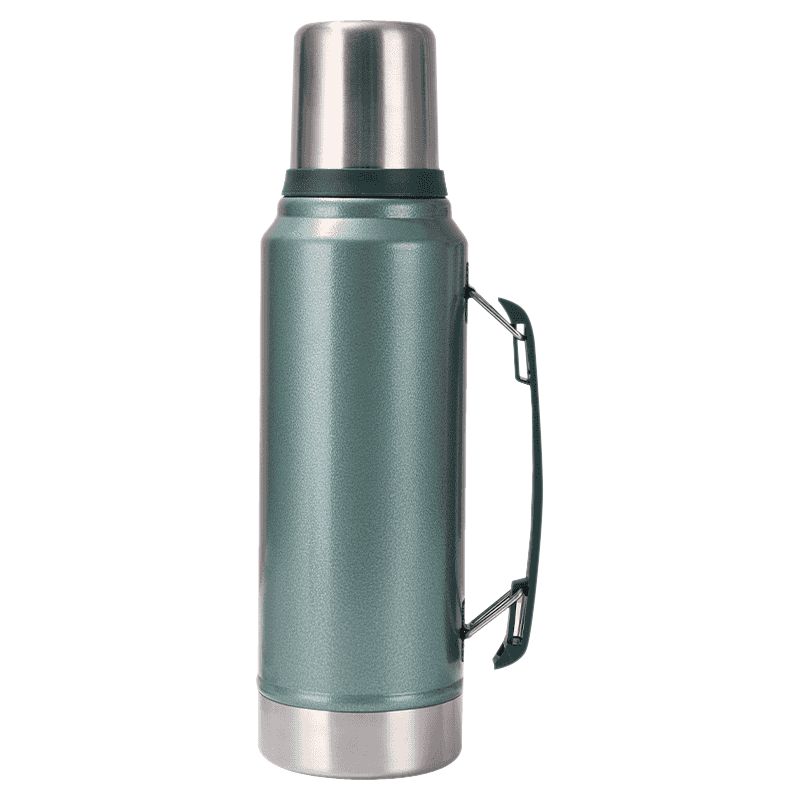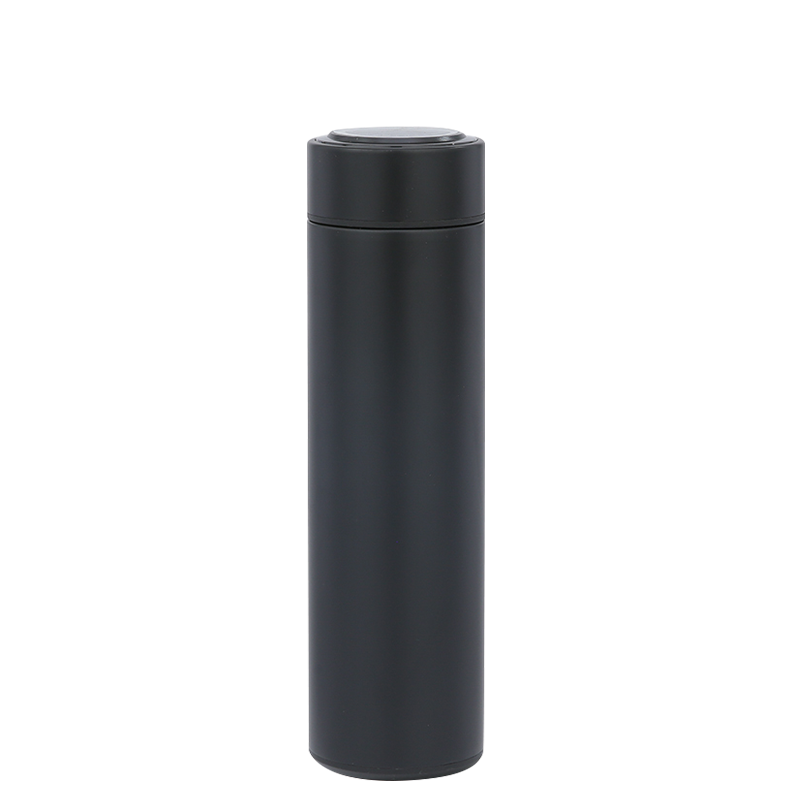
+86-13566758039

Industry News
Cork Bottom Mugs are transforming the way we interact with drinkware, offering a simple yet practical solution that combines functionality with style. Whether you're enjoying a hot coffee in a cafe or sipping tea at home, these mugs feature a cork base that provides a natural cushion and grip. The cork's insulating properties not only protect your table surfaces from heat or scratches, but also offer a comfortable and stable experience when handling the mug. As sustainability continues to shape consumer choices, the Cork Bottom Mug emerges as a popular choice for those seeking eco-friendly, practical, and aesthetically pleasing drinkware.
A Cork Bottom Mug is a drinkware design that features a regular mug body (often ceramic, glass, or stainless steel) combined with a cork base attached to the bottom. The cork section acts as a natural cushion and grip layer.
The cork layer acts as a natural cushion, helping reduce marks or scratches on wood, glass, and metal surfaces.
Cork has a light texture that increases friction, making the mug less likely to slide on smooth countertops.
Cork feels warm and gentle in the hand. Even when the drink is hot, the cork helps soften the temperature near the base.
When the mug touches the table, the cork softens the impact so it creates less noise—helpful in offices, libraries, or calm settings.
Cork comes from a renewable source and brings a rustic, organic look that fits modern lifestyle and design trends.
Since the cork protects surfaces, users often do not need an extra coaster, helping reduce clutter.
Cork adds protection without adding much weight, keeping the mug easy to carry.
Good for homes, cafes, hotels, coworking spaces, gifts, and branded merchandise.
Cork is a natural insulator, so the base stays cooler and can be placed on delicate surfaces with more confidence.
Many brands use Cork Bottom Mugs for logo printing on the body or light branding on the cork, making it a popular choice for promotional items.
| Feature | Regular Mug | Cork Bottom Mug |
|---|---|---|
| Base Material | Same material as the mug body (ceramic, glass, metal) | Added cork layer attached to the bottom |
| Surface Protection | May cause marks or scratches on delicate surfaces | Cork helps protect surfaces without needing a coaster |
| Grip & Stability | Can slide easily on smooth tables | Cork increases friction and reduces sliding |
| Heat Transfer | Base may become warm or hot | Cork acts as an insulator and helps keep the base cooler |
| Noise When Placed Down | Can make a louder sound on hard surfaces | Cork softens contact and reduces noise |
| Style & Appearance | Traditional or modern designs | Adds a natural, warm, rustic look with cork |
| Weight | Standard weight | Slightly more due to the cork layer |
| Use Without Coaster | Often needs a coaster | Functions similar to a built-in coaster |
| Customization Options | Printed or engraved on mug body | Body customization plus light cork stamping options |
| Maintenance | Straightforward cleaning | Requires gentle care around the cork area |
Cork at the base of a mug is not only a functional pad underfoot; it changes how people interact with a cup. A small band of cork can prevent sliding, reduce table marks, and soften the moment of setting a hot or cold drink down. At the same time, cork contributes a natural aesthetic that shoppers now expect more often in reusable items. Research and industry writing on cork emphasize its regenerative harvesting and role in environmentally aware product choices, which helps explain why cork is showing up across categories from fashion to packaging.
Tactile cues are powerful in retail and hospitality. When a customer picks up a cup with a cork base, the texture and slight give under the palm convey quality and attention to detail. Multisensory product design literature suggests that touch influences preference and memory for objects, so a Cork Bottom Mug can act as a subtle brand ambassador on tables and counters. For venues and merchandisers, that sensory advantage often translates into higher interest from customers who want small sustainable touches in their daily routines.
Cork is harvested without felling trees, and cork landscapes are frequently highlighted for their biodiversity and carbon capture potential. For companies positioning reusable drinkware with an environmental angle, cork offers a narrative that resonates: it is renewable, biodegradable, and often sourced from managed ecosystems. This material story supports product messaging when paired with clear supply chain transparency from manufacturers like Aijunware.
Choices about body material change the user experience:
| Mug Body Material | Why Pair with Cork | Typical Tradeoff |
|---|---|---|
| Ceramic | Classic appearance, good heat retention | Heavier; brittle if dropped |
| Glass | Clean visual presentation, ideal for layered drinks | Shows wear and fingerprints |
| Stainless Steel | Durable, great for outdoor or travel use | May need insulating layer to prevent heat transfer |
| Porcelain | Fine finish, premium aesthetic | Thinner walls, requires careful handling |
Aijunware often recommends matching cork thickness to the mug body: thicker cork for heavier ceramics, slightly thinner for slim glass models. Attachment method is chosen to preserve dishwasher or hand-wash guidance while keeping the cork secure.
Cafes, boutique hotels, event caterers, and branded retail lines each use cork base mugs differently. In busy service lines, a built-in cork base reduces the need for separate coasters and helps protect tabletops across varied surfaces. For retail, cork elevates the packaging story and offers a tactile unboxing moment. Event planners appreciate the reduced noise when many guests set down their cups during a program. Manufacturers who supply multiple sectors must offer options for adhesion method, replaceable cork pads, and finishes that match a venue's aesthetic.

Buyers look at several factors when selecting a cork-based mug:
Attachment type: glued, mechanically fastened, or integrated during molding
Cork density and thickness: affects grip, wear, and feel
Surface finish: sealed cork resists staining, unsealed cork reads more natural
Service guidance: recommended cleaning methods shape back-of-house operations
Customization: cork stamping, laser marking, or color-tinted cork to match brand palettes
From a production perspective, controlling tolerances where cork meets the mug rim is essential. Common approaches include pre-cut cork discs that are bonded under heat and pressure, or cork pads fixed with food-safe adhesives after glazing and firing. Different approaches may affect production duration, tooling requirements, and consistency in extended operations.
Practical production checkpoints include:
These steps reduce returns and field repairs while aligning product claims with observed field performance.
Cork requires only simple care to maintain its performance. Routine maintenance and occasional trimmings are helpful:
| Care Step | Why It Matters |
|---|---|
| Wipe dry after washing or spillage | Limits prolonged moisture exposure, preventing damage to the cork |
| Avoid high-temperature soaking | Preserves adhesives and maintains cork integrity |
| Recondition unsealed cork with light oil if needed | Restores slight suppleness and prevents cracking, without affecting the grip |
| Replace worn pads in modular designs | Ensures surface protection remains effective and consistent |
Switching to a Cork Bottom Mug affects operations subtly: fewer coasters required, reduced tabletop marker repair, and a more consistent table experience. For rooms and events, the reduced clatter from cork can improve guest perception during quiet moments. That said, front-of-house teams should be trained on care routines to avoid confusion when mugs go through dishwash cycles that are not suitable for cork.
Cork is resilient but can compress or stain if boxed tightly without separation. Proper packaging balances protection with minimal excess materials.
| Packaging Element | Practical Recommendation |
|---|---|
| Inner Cushioning | Use separators to prevent cork-to-cork pressure |
| Unit Wrap | Breathable paper or light film prevents scuffs |
| Bulk Trays | Foam pallets reduce movement in cartons |
| Palletization | Avoid stacking heavy cartons directly atop delicate runs |
Here are several accessory categories that pair especially well with Cork Bottom Mugs, plus why they make sense and how they can be positioned.
When choosing which accessories to offer or recommend with a Cork Bottom Mug, Aijunware should consider:
The Cork Bottom Mug brings more than just a unique design element to the table; it enhances the overall experience by combining functionality with sustainability. From protecting surfaces to offering a more stable grip, cork continues to demonstrate its value as a versatile material in modern drinkware. Whether for cafes, hotels, or personal use, these mugs create an opportunity to blend style, comfort, and eco-consciousness into everyday life. For businesses and consumers alike, the Cork Bottom Mug serves as a lasting solution that meets both practical needs and the growing demand for environmentally responsible products.
Your email address will not be published. Required fields are marked *








* Your email is safe with us, we don't spam.


Our company's products include vacuum flasks, beer mugs, coffee mugs, car tumbler, fire stove and tensile parts, etc.
Phone: +86-13566758039
Tel: +86-0579-87171178
Fax: +86-0579-87171178
E-mail: [email protected]
Add: No.29, Qiaodong Road, Qiaotouzhou Village, Longshan Town, Yongkang, Jinhua, Zhejiang, China.

 English
English 中文简体
中文简体 日本語
日本語 Français
Français Español
Español